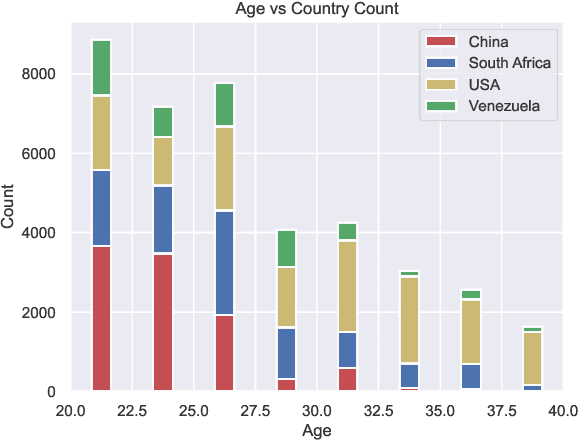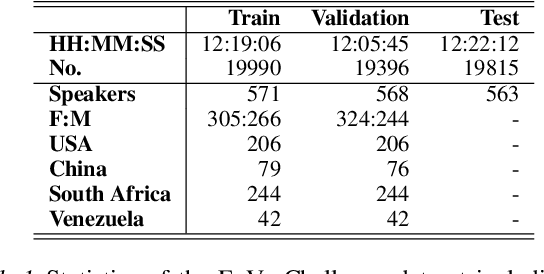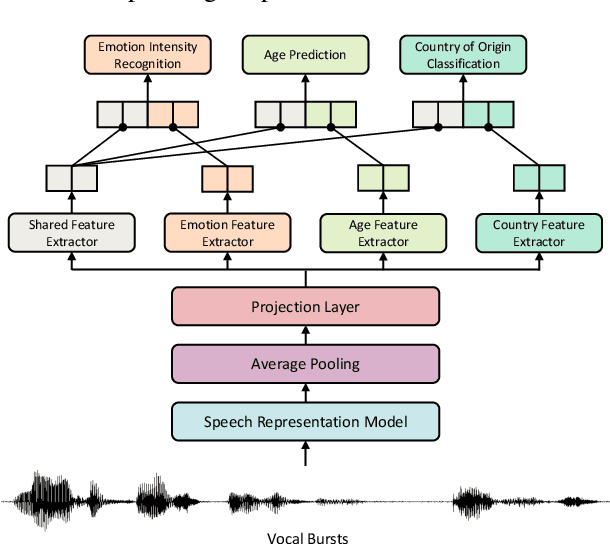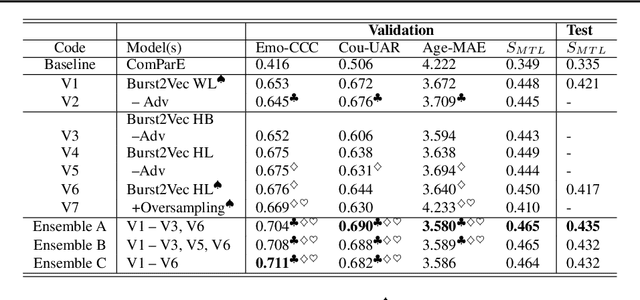Atijit Anuchitanukul
Burst2Vec: An Adversarial Multi-Task Approach for Predicting Emotion, Age, and Origin from Vocal Bursts
Jun 24, 2022



Abstract:We present Burst2Vec, our multi-task learning approach to predict emotion, age, and origin (i.e., native country/language) from vocal bursts. Burst2Vec utilises pre-trained speech representations to capture acoustic information from raw waveforms and incorporates the concept of model debiasing via adversarial training. Our models achieve a relative 30 % performance gain over baselines using pre-extracted features and score the highest amongst all participants in the ICML ExVo 2022 Multi-Task Challenge.
Revisiting Contextual Toxicity Detection in Conversations
Nov 30, 2021



Abstract:Understanding toxicity in user conversations is undoubtedly an important problem. As it has been argued in previous work, addressing "covert" or implicit cases of toxicity is particularly hard and requires context. Very few previous studies have analysed the influence of conversational context in human perception or in automated detection models. We dive deeper into both these directions. We start by analysing existing contextual datasets and come to the conclusion that toxicity labelling by humans is in general influenced by the conversational structure, polarity and topic of the context. We then propose to bring these findings into computational detection models by introducing (a) neural architectures for contextual toxicity detection that are aware of the conversational structure, and (b) data augmentation strategies that can help model contextual toxicity detection. Our results have shown the encouraging potential of neural architectures that are aware of the conversation structure. We have also demonstrated that such models can benefit from synthetic data, especially in the social media domain.
 Add to Chrome
Add to Chrome Add to Firefox
Add to Firefox Add to Edge
Add to Edge